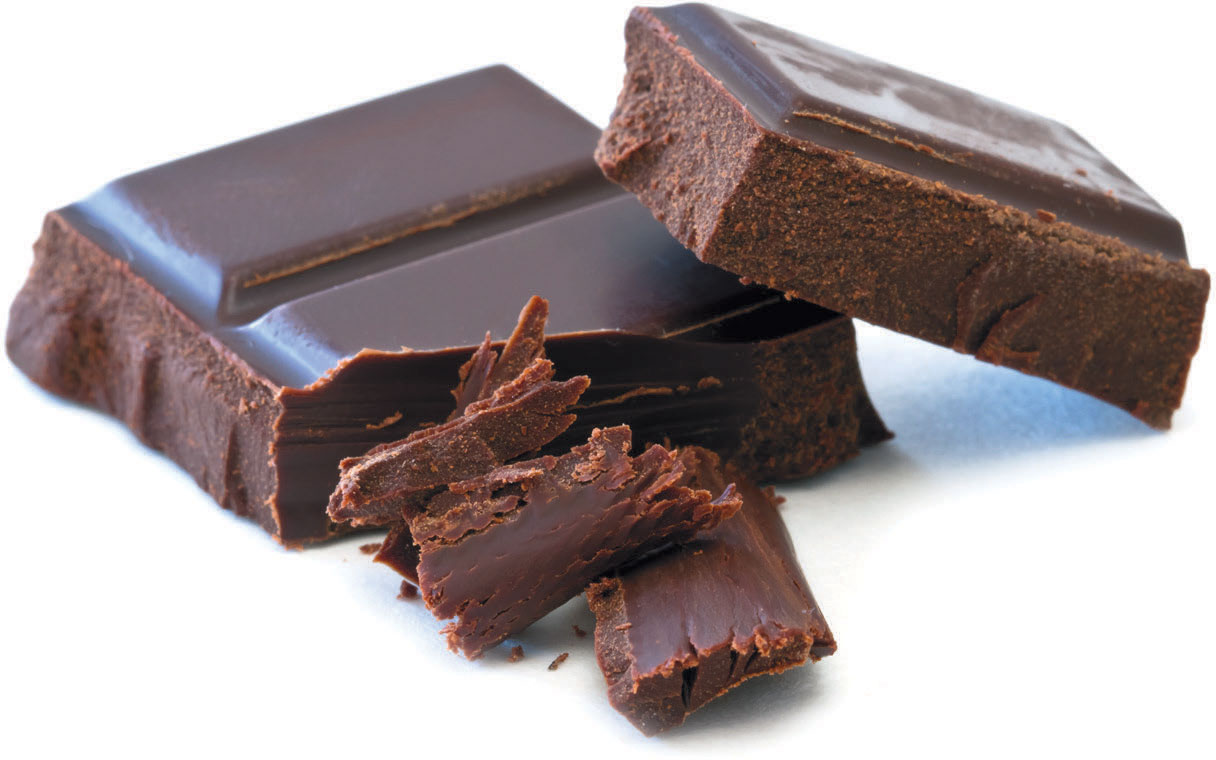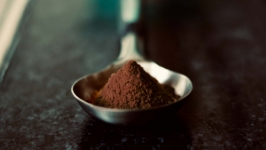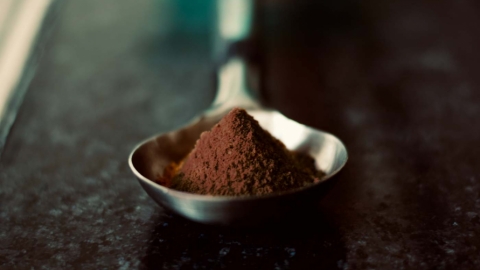Chocolate Benefits Both Brain and Body
From cookie to candy, to bar and brownie, chocolate is a staple of our diets. It’s such a popular treat, in fact, that the average American consumes nearly 9½ pounds of it per year.
Chocolate comes from the dried beans of the fruit pod produced by the cacao tree (Theobroma cacao), which is native to South and Central America. The beans are ground into a paste, and made into chocolate’s commercial form with the addition of sugar, cocoa butter, vanilla, or milk powder (to create milk chocolate).
While all varieties are delicious, dark chocolate takes the cake when it comes to health.
“When it comes to chocolate, it’s about finding products that are made from the highest-quality cacao and use the least processed ingredients possible,” says Robin DeCicco, nutritionist at Power of Food Education in Ramsey. “The benefits from chocolate are most notable from raw cacao, which has not been processed with milk solids, sugar, emulsifiers, and artificial ingredients,” she says, adding that the percentage of cacao in a bar is worth considering.
“Most of the research claiming dark chocolate’s health benefits refer to chocolate that is 70 percent dark or higher,” she says, adding that chocolate with a higher cacao content is also higher in calcium and magnesium, both of which are good for bone and heart heath.
This higher percentage puts chocolate in the “superfood” category (along with kale, green tea, berries, cabbage, and onions) because of its high antioxidant properties.
“Chocolate is one of the highest-antioxidant foods because it is so rich in flavonoids,” says DeCicco. “Antioxidants (like flavonoids) help to fight against free radical damage and toxic build-up in the body to help prevent disease,” she explains, noting that flavonoids in cocoa beans are what give chocolate that deep, strong, delicious taste. “Flavonoids are also incredibly heart healthy and can help lower blood pressure, decrease LDL cholesterol, and transform sticky and tight cholesterol platelets into larger and looser ones—which is what you want,” she says, adding that they have circulatory benefits as well.
IT’S ABOUT FINDING PRODUCTS THAT ARE MADE FROM THE HIGHEST QUALITY CACAO AND USE THE LEAST PROCESSED INGREDIENTS POSSIBLE.
“Flavonoids in dark chocolate can help increase blood flow throughout the whole body—to organs and the brain,” she says. “Research has shown that a few pieces of dark chocolate a day can not only protect against oxidative stress, but improve brain function, memory, and lower the stress hormone cortisol.”
Not all chocolate is created equal, however, so think twice before you reach for that candy bar in the checkout line.
Milk chocolate contains less actual cacao than dark chocolate (milk chocolate can be anywhere from 10 to 50 percent cacao while dark chocolate can be 50 percent or above), and milk chocolate tends to contain more added ingredients such as milk solids, cream, and sugar and less of the actual cocoa bean.
“This is why you’ll hear people say that dark chocolate is ‘healthier’ than milk chocolate, but it’s still not that simple,” says DeCicco. “Reading the nutrition label is very important. Some popular dark chocolate brands contain just as much sugar as milk chocolate, and there is also more saturated fat found in milk chocolate than dark because of the milk and cream that is used, which you want to avoid, especially in preventing heart disease and inflammatory-related illnesses,” she says.
With so many different types of chocolate and chocolate products available, being a choosy consumer is key.
“If something says ‘chocolate,’ it could actually be chocolate flavor,” says Deborah Cohen, associate professor for the Department of Clinical and Preventive Nutrition Sciences at Rutgers University in Newark. “Many hot cocoa mixes, drinks, and treats contain flavoring rather than actual chocolate, not to mention more sugar, hydrogenated fats, vegetable oils, butterfat, and artificial flavors,” she says, adding to choose dark chocolate whenever possible, since it contains less sugar, and to skip “white chocolate,” which is comprised of cocoa butter, sugar, and milk, and doesn’t contain any actual chocolate.
Cohen suggests that while chocolate does contain small amounts of phosphorus, zinc, magnesium, and iron, one should first consider getting these nutrients from whole foods like fruits and vegetables.
“You’re going to have to eat a lot of chocolate to get nutritional benefits, all the while consuming lots of sugar and fat,” she says, adding that while both dark and milk chocolate contain 8–12 grams of fat per ounce, an ounce of milk chocolate contains 15 grams of sugar while one ounce of 70 percent dark chocolate has only 7. “Instead, focus on consuming fruits and vegetables, which are low in calories and high in antioxidants,” she says, and consider chocolate, preferably dark chocolate, as an occasional treat. “Enjoying a bit of chocolate now and again is fine for quenching your chocolate craving, as long as it’s consumed in moderation as part of a balanced diet.”
Before giving in to your sweet tooth, raise the bar on chocolate and choose quality first for a healthy indulgence you can feel good sinking your teeth into.
HEALTHY WAYS TO EAT CHOCOLATE
Robin DeCicco, nutritionist at Power of Food Education in Ramsey
Break up dark pieces and add to trail mix with raw nuts, seeds, and dried fruit
Spread natural nut butter on top of chocolate bark
Use cacao nibs in oatmeal, smoothies, and yogurt bowls
Melt dark chocolate and pour over air-popped popcorn
Swap in dark chocolate chips or cacao nibs when making chocolate chip cookies
Buy unprocessed cocoa powder in the baking aisle to mix into yogurt
Blend unprocessed cocoa powder with a frozen banana and almond milk for a delicious healthy ice cream









